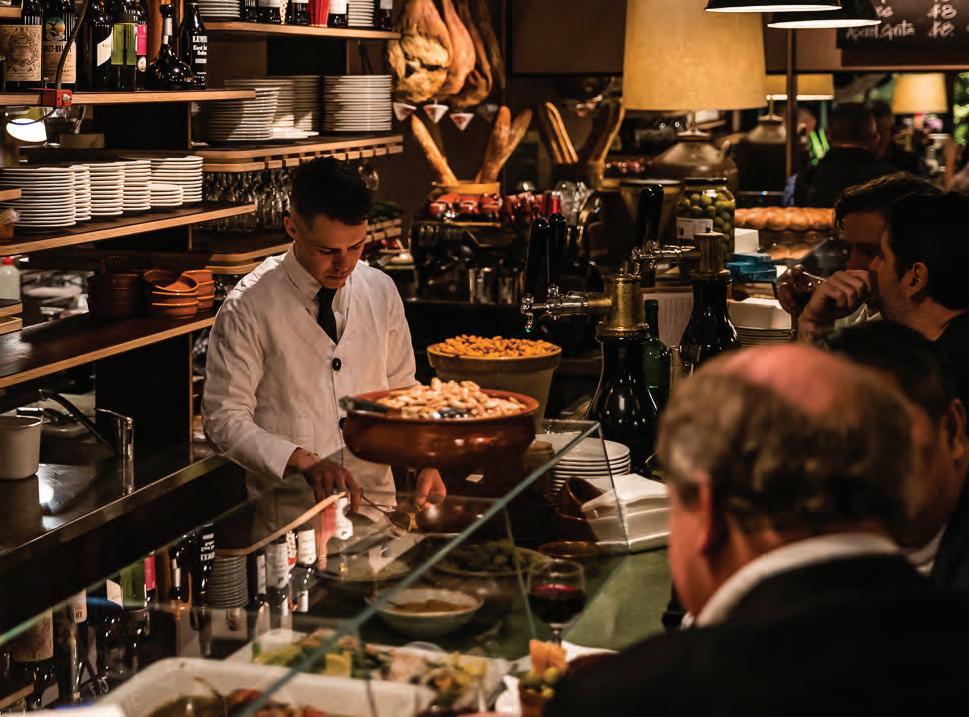
4 minute read
KOYOMI
Is Sharing Shochu With Australia
THE WHITE SPIRIT CATEGORY HAS LATELY BEEN INUNDATED BY AN ABUNDANCE OF VODKA, GIN AND RUM. WHEN THESE OLD-FAITHFULS COME TO MIND, WE INSTANTLY HAVE A STRONG IDEA OF WHAT TO EXPECT. NOW, DON'T GET US WRONG, WE LOVE A G&T OR A SIMPLE VODKA SODA. BUT IT'S TIME FOR SOMETHING NEW AND UNIQUE. SOMETHING TO SHAKE THE WHITE SPIRIT CATEGORY UP. SOMETHING WE HAVEN'T SEEN BEFORE. SOMETHING SHOCHU.
Advertisement
Koyomi is the new kid on the block in Australia and boy oh boy does it tick every box that's missing in the category. With a nod towards Japanese culture and craft, Koyomi has taken on the challenge, of introducing the popular Japanese spirit 'shochu' to the Australian market, head-on.
This premium highball in a can was designed for the ease of a sophisticated consumer who wouldn't normally have a pre-mixed tipple. Presented in a loud and exotic can, this ready to drink shochu highball is the modern and relaxed way of experiencing an ancient spirit that's loaded with history.
Koyomi directly translated means calendar but as with many other Japanese words, there is an inference to the word - 'a connection with the flow of time, changing seasons, colours, moods, emotions, culture and temperature'. This definition can be seen in the flavour profiles they have chosen, that all bond and flow off each other. And yet, are also individually

perfect for any occasion. The variety comes in three seasonal and popular Japanese flavours. Yuzu & Lime, Mandarin & Grapefruit and Blood Orange & Bitters.
Yuzu and lime is a perfectly balanced marriage of Japanese and Western citrus fruits. Creating a refreshing zesty highball that's super easy to drink. Mandarin & Grapefruit has warmer sweet notes, making this can a more elegant and adventurous highball. Lastly, Blood Orange & Bitters is an aromatic highball. It's bold, richer and sweeter because of the blood orange but then balanced out by the bitters.
These premium shochu highballs come in packs of four 250ml cans, with three unique flavours available. There is a pack of shochu highballs for everyone and every occasion.
With an ABV of 4.2%, these cans are low in calories paired with elegant natural ingredients. Making each can only 109 calories.
If you don't know exactly what shochu is, there's nothing to be embarrassed about. We've got everything you'll need to know about this premium white spirit. But before we get stuck into that, the first thing you need to know is: shochu is not sake. It's not even close.
Shochu is one of the most popular drinks amongst Japanese locals, even more so than sake. Outside of Japan shochu is an uncommon and exotic spirit. However, it is the go-to spirit to enjoy with a meal in Japan. It's also a super versatile liquor, made from sweet potatoes, rice, wheat or cane sugar. The origin of shochu is unclear, but according to Japanese historical records, it can be dated back to the 16th century.
Which is why the first thing you needed to know was that shochu is not sake. It has its own individual production process and history. Its only common factor is that they're both Japanese. Sake is fermented and made from rice. Whereas shochu's ingredients can vary greatly and is distilled. It is definitely an original within the white spirit category.
Shochu is often referred to by Westerners as 'Japanese Vodka' because of its distillation process. But in reality, this nickname doesn't do it any justice. Shochu is incredibly easy to drink. Depending on the type of Shochu varietals, it is an approachable and versatile spirit. It has a very smooth finish, especially when consumed straight.
Straight shochu also has an ABV of around 25%. Which is lower than gin or vodka but stronger than sake or wine. It's medium ABV makes it a fantastic aperitif and an excellent option for guests who are looking for a lower ABV beverage.



WHITE SPIRITS

What’s the Difference?
SO YOU'RE PROBABLY THINKING WHAT THE DIFFERENCE IS BETWEEN SHOCHU AND OTHER WHITE SPIRITS? WE'VE BROKEN IT DOWN FOR YOU.
SHOCHU VS SAKE
• Sake is fermented. Shochu is distilled like other spirits • Sake has a lower ABV sitting around 16% (Shochu around 25%) • Sake is enjoyed either hot or warm, while Shochu is enjoyed in many ways • They taste nothing alike
SHOCHU VS VODKA
• Even though they are both distilled, they taste nothing alike • Vodka has a higher ABV (40%) • Shochu is more approachable and versatile compared to vodka
SHOCHU VS SOJU
• Out of all the white spirits, shochu and soju do have similarities; both are distilled from similar ingredients, popular in their own countries and traditionally enjoyed with food • Soju is slightly sweeter due to added sugar and usually drank neat










